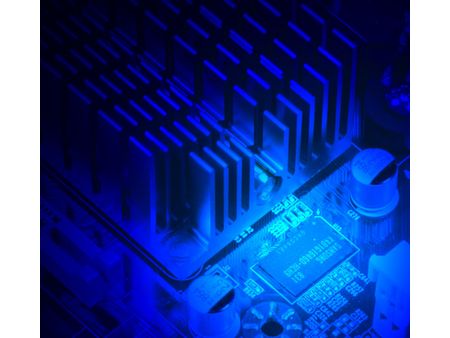Graphics Boosted: 790GX's Side-Port Explored
AMD’s Side-Port Memory: Value Or Nonsense?
The last two years have been increasingly difficult for AMD. Although the company’s product portfolio is modern and powerful, Intel has had a hot hand when it comes to releasing new processors and platforms. The Core 2 Duo has dominated performance metrics since its introduction, and AMD is late with its own ultra-mobile, low cost platform to compete with Intel’s Menlow platform with its Atom processor. That said, AMD, post-ATI acquisition, is usually superior when it comes to the performance of integrated graphics chipsets. The current 790GX chipset, with its side-port memory option, aims to extend this leadership.

Since the high-end and upper mainstream desktop segments are out of reach for AMD, the firm had to look at optimizing the value of its mainstream and low-cost products. The results can be seen when comparing processor prices. There are hardly any AMD processors that cost more than $200 today, ensuring AMD’s products remain competitive from a price/performance standpoint. These improvements have had an influence on platforms, as AMD’s 790GX chipset (and the 780G) offer a side-port memory option, allowing motherboard manufacturers to add a limited amount of real graphics memory to complement the standard shared memory.
Platform Choices
Enthusiasts will not go for a platform with integrated graphics—they will typically install a full-blown graphics card for performance reasons. However, the capabilities of integrated platforms have improved impressively, especially when it comes to 3D performance and HD video playback. Although there still aren’t any integrated chipsets that can provide serious 3D performance for the latest game titles, they have become extremely versatile. The flexibility to install additional graphics cards to hook up more displays and options to increase graphics performance by utilizing ATI’s CrossfireX or Nvidia’s Hybrid SLI have made integrated graphics platforms by both companies excellent choices for the mainstream.
SiS and VIA effectively stopped competing for the mainstream, leaving most of this market to AMD and Nvidia. Nvidia has its so-called mGPUs, which are motherboard-integrated graphics processing units. The current models are the GeForce 8200 to 8300 types, which provide traditional integrated graphics, paired with DirectX 10 capabilities and Hybrid SLI graphics for performance enhancements, support for multiple monitors and potential power savings. AMD has had its 780G chipset, and it introduced the 790GX several months ago, upgrading the graphics unit from the Radeon HD 3200 to HD 3300 level and introducing its PowerPlay power-saving feature and the revised SB750 southbridge.
We will have a look at the graphics flexibility and performance of the 790GX in this article using a Jetway HA07 Ultra motherboard that comes with the side-port memory option.
Get Tom's Hardware's best news and in-depth reviews, straight to your inbox.
Current page: AMD’s Side-Port Memory: Value Or Nonsense?
Next Page AMD 790GX Chipset With Side Port Memory